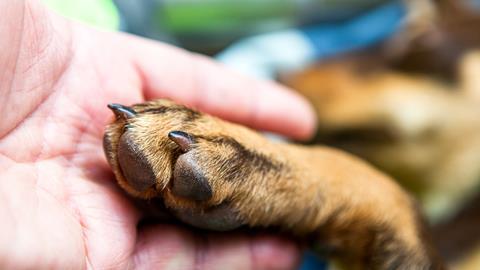Sponsored content: ’More frequent price changes in the pet insurance market are likely to result in daily shifts in competitiveness,’ says Stephen Kennedy, director at Pearson Ham Group

The UK pet industry has grown significantly in recent years. Pet ownership spiked during the Covid lockdowns and subsequent changes to working patterns – in particular remote working – have supported this as a longer term change.
According to Statista, the share of households owning a pet increased by over 50% – from 41% in 2020 to 62% in 2022.
There are now an estimated 13m dogs and 12m cats in the UK, with owners spending £9.7bn annually on their animal companions. In this context, it’s unsurprising that insurers are turning their attention to this line of business.
Historically, pricing for pet insurance, in the absence of any pre-existing medical conditions, has been based predominately on the animal type, age and breed.
Little or no account has been taken of owner characteristics – and how these might impact on pet health – or demographic propensities to purchase products due to specific features and benefits and relative willingness to pay for these.
Increasing sophistication
Over the past decade, we have seen increasing sophistication in pricing, particularly for motor and home insurance.
As well as improvements to risk models using third-party data enrichment sources, providers have adopted more advanced retail pricing approaches. To a large extent these have been driven by the growth of price comparison websites and the increased visibility of competitor pricing for consumers.
Lifetime value assumptions and price elasticity of demand estimates have introduced several pricing factors outside of those traditionally used as well as increasing the frequency of price changes.
However, having reached a point of diminishing returns, providers are now exploring what the next area for pricing focus should be. For many, pet insurance is coming up as the logical answer.
Insurers are starting to update pricing models with additional characteristics – such as owner age, location, and property type – which can have an impact on pet health and wellbeing.
Third-party data sources are being evaluated to identify any other factors that may prove to be significant and provide a competitive advantage.
Price optimisation tools are being employed more widely and conversion and elasticity models are becoming more influential on the final price returned to the customer. We are also starting to observe other retail pricing techniques previously used in motor and home insurance pricing being used, such as lead time between quote and inception.
We would expect this innovation to continue. More frequent price changes in the pet insurance market are likely to result in daily shifts in competitiveness. The most agile providers, with the ability to assess and deploy price changes quickly will be able to take advantage of the opportunities this might present. Changes are increasingly likely to be targeted on different factors and third-party data enrichment will make it more difficult to identify specific tactics. The ability to remain abreast of market and competitor movements is becoming more and more important and will be crucial to continued success in this market as pricing sophistication develops.
- To explore how Pearson Ham Group can help you with insurance pricing insights, visit www.pearsonhamgroup.com/how-we-can-help/insurance-insights/

Hosted by comedian and actor Tom Allen, 34 Gold, 23 Silver and 22 Bronze awards were handed out across an amazing 34 categories recognising brilliance and innovation right across the breadth of UK general insurance.



















































